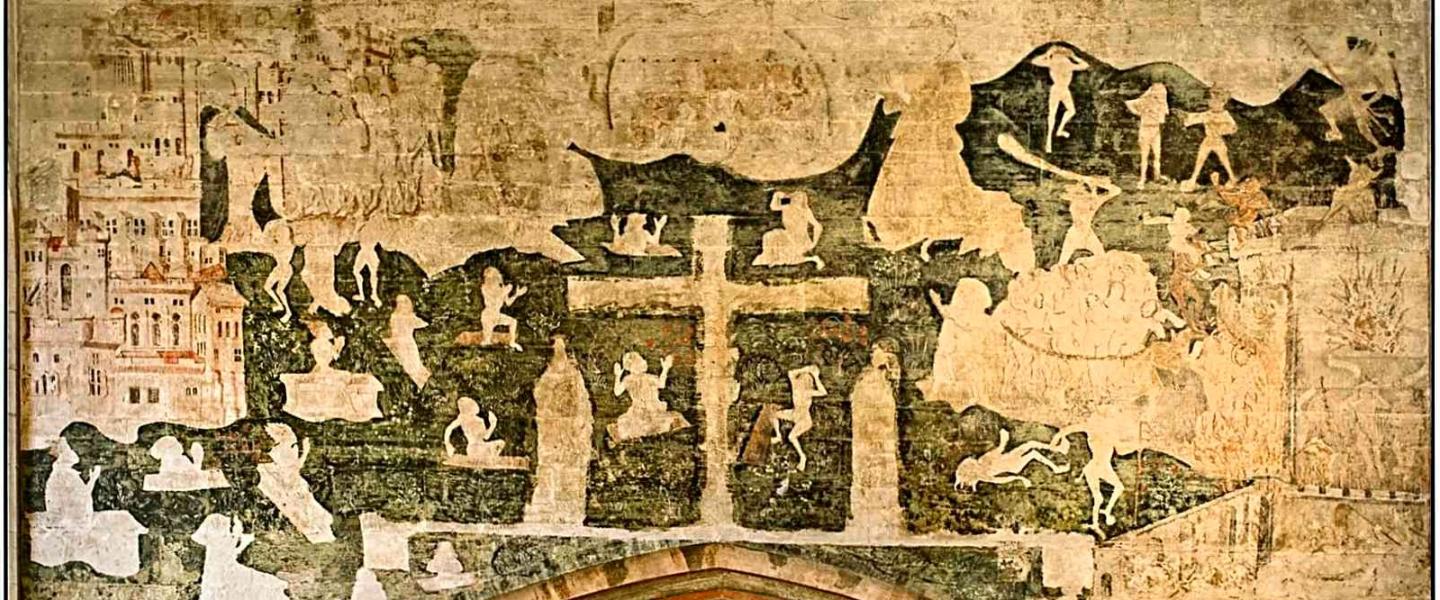The Guild Chapel forms part of the estate of Stratford Town Trust, a grant-giving charity with origins itself dating back to the 13th Century.
The story of the Guild Chapel starts in 1269 when the Guild of the Holy Cross was given permission to build a hospital and chapel in Stratford-upon-Avon.
Within a century the Guild became the dominant social force in the town, focused on the welfare of its members. In the 15th century, the Guild prospered. It built the Guild Hall, Schoolhouse and Almshouses that dominate Church Street today and a schoolmaster was employed to teach the members’ children. The Chapel in fact became so important to townspeople that the clergy of the parish church complained that people often attended the chapel rather than the church.
Standing across from Shakespeare’s final home, New Place, and right next door to his schoolroom, the Guild Chapel has long associations with the playwright and his family, and with the Clopton family too.
It was Hugh Clopton, wealthy local benefactor and Lord Mayor of London, who paid for the Chapel’s wall paintings to be applied in the early 1500s. And it was John Shakespeare – father of the playwright – who recorded the whitewashing by Royal order demanding they be defaced and covered up less than 70 years later, in the town accounts in his capacity as Chamberlain.
Recently the subject of an exciting conservation project, conservators now believe the Guild Chapel’s walls display one of the few surviving pre-Reformation medieval schemes painted at the same time, and painted as one piece.
The Guild of the Holy Cross in Stratford is founded. In 1269 the Guild is granted a licence to build a hospital and private oratory, on the site of the current Guild Chapel. The Guild also builds almshouses for the poor. The hospital has closed by the end of the century.
The Guild is powerful locally and acts like a proxy government in Stratford. The Guild is amalgamated with two smaller guilds in Stratford, the Guilds of the Blessed Mary, and St. John the Baptist.
The Guild is refounded. They convert the old infirmary - which was being used for meetings and feasts - and have it consecrated for members to use for worship. The Guildhall and a schoolhouse are constructed. At the end of the century, the old timber-framed nave is rebuilt in stone and the Chapel walls are covered with an elaborate painting scheme.
The medieval painting scheme in the Guild Chapel is internationally important. Much of it survives today and we are still discovering more. If you would like to know more about our very special paintings, read about them here.
Almshouses are built next to the schoolhouse. As a result of the Reformation in England, the Guild is dissolved. Stratford is granted a Royal Charter of Incorporation and all the Guild’s assets are transferred to the new corporation. John Shakespeare records the whitewashing of the Chapel’s walls. The building is subsequently used for a variety of purposes.
In the early 17th century, the Chapel’s nave is painted with a grey monochrome scheme. A pulpit is installed reflecting the Protestant focus on the Bible. A notorious puritan vicar is accused of misusing the Chapel and allowing it to be damaged.
The walls of the Guild Chapel are painted with imitation marble columns with fictive red and pink marble panels in-between. A new by-law states prayers are to be said in the Chapel every day except market day.
During refurbishments to the Chapel the old timber roof is replaced with a plaster ceiling. Some of the medieval wall paintings are discovered but they are covered over again. A gallery to provide extra seating is installed. A full service is once again held in the Chapel.
King Edward VI Grammar School start to use the Chapel. The medieval wall paintings are rediscovered, and some are conserved. The Friends of the Guild Chapel is formed and they oversee significant repairs and alterations to the Chapel, including the fitting of wooden panels to the interior.
Stratford Town Trust is formed and becomes custodian of the Guild Chapel. The Doom painting, and another known as Erthe-upon-Erthe, are cleaned and conserved. The wooden panels are temporarily removed and a photographic record is created of the walls underneath.
The known history of the Stratford Guild goes back nearly 800 years. To find out more about the Guild and the complex of buildings they built in Stratford, as well as the changes that have happened over the centuries, read more here.
